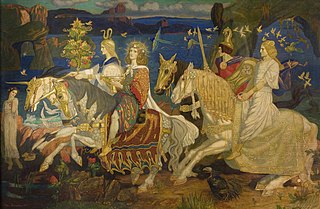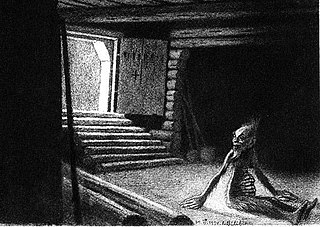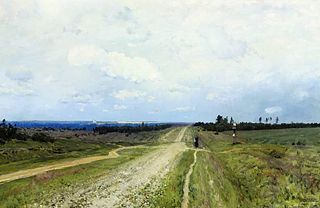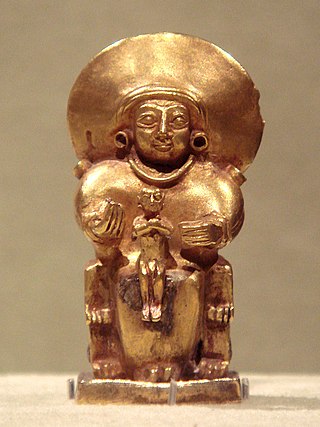Related Research Articles

Irish mythology is the body of myths indigenous to the island of Ireland. It was originally passed down orally in the prehistoric era. In the early medieval era, some myths were transcribed by Christian monks, who heavily altered and Christianised the myths. Irish mythology is the best-preserved branch of Celtic mythology.
In Welsh mythology, Amaethon was the god of agriculture, and the son of the goddess Dôn. His name means "labourer" or "ploughman", and he is cited as being responsible for the Cad Goddeu, or "Battle of Trees", between the lord of the otherworld, Arawn, and the Children of Dôn.
Annwn, Annwfn, or AnnwfynAnnwvn, Annwyn, Annwyfn, Annwvyn, or Annwfyn) is the Otherworld in Welsh mythology. Ruled by Arawn, it was essentially a world of delights and eternal youth where disease was absent and food was ever-abundant. It became identified with the Lutheran afterlife in paradise.
In Irish mythology, Mag Mell is one of the names for the Celtic Otherworld, a mythical realm achievable through death and/or glory. Unlike the underworld in some mythologies, Mag Mell was a pleasurable paradise, identified as either an island far to the west of Ireland or a kingdom beneath the ocean. However, Mag Mell was similar to the fields of Elysium in Greek mythology, and, like the fields of Elysium, was accessible only to a select few. Furthermore, Mag Mell, like the numerous other mystical islands said to be off the coast of Ireland, was never explicitly stated in any surviving mythological account to be an afterlife. Rather, it is usually portrayed as a paradise populated by deities, which is occasionally visited by some adventurous mortals. In its island guise it was visited by various Irish heroes and monks forming the basis of the Adventure Myth or "echtrae" as defined by Myles Dillon in his book Early Irish Literature. This otherworld is a place where sickness and death do not exist. It is a place of eternal youth and beauty. Here, music, strength, life and all pleasurable pursuits come together in a single place. Here happiness lasts forever, no one wants for food or drink. It is the Irish equivalent of the Greek Elysium or the Valhalla of the Norse.

Proto-Indo-European mythology is the body of myths and deities associated with the Proto-Indo-Europeans, speakers of the hypothesized Proto-Indo-European language. Although the mythological motifs are not directly attested – since Proto-Indo-European speakers lived in preliterate societies – scholars of comparative mythology have reconstructed details from inherited similarities found among Indo-European languages, based on the assumption that parts of the Proto-Indo-Europeans' original belief systems survived in the daughter traditions.
Iriy, Vyrai, Vyriy, or Irij is a mythical place in Slavic mythology where "birds fly for the winter and souls go after death" that is sometimes identified with paradise. Spring is believed to have arrived on Earth from Vyrai.

In Celtic mythology, the Otherworld is the realm of the deities and possibly also the dead. In Gaelic and Brittonic myth it is usually a supernatural realm of everlasting youth, beauty, health, abundance and joy. It is described either as a parallel world that exists alongside our own, or as a heavenly land beyond the sea or under the earth. The Otherworld is usually elusive, but various mythical heroes visit it either through chance or after being invited by one of its residents. They often reach it by entering ancient burial mounds or caves, or by going under water or across the western sea. Sometimes, they suddenly find themselves in the Otherworld with the appearance of a magic mist, supernatural beings or unusual animals. An otherworldly woman may invite the hero into the Otherworld by offering an apple or a silver apple branch, or a ball of thread to follow as it unwinds.

Ancient Celtic religion, commonly known as Celtic paganism, was the religion of the ancient Celtic peoples of Europe. Because there are no extant native records of their beliefs, evidence about their religion is gleaned from archaeology, Greco-Roman accounts, and literature from the early Christian period. Celtic paganism was one of a larger group of polytheistic Indo-European religions of Iron Age Europe.

The Ovinnik, Joŭnik or Jownik is a malevolent spirit of the threshing house in Slavic folklore whose name derived from ovin 'barn'. He is prone to burning down the threshing houses by setting fire to the grain. To placate him, peasants would offer him roosters and bliny. On New Year's Eve, the touch of an Ovinnik would determine their fortune for the New Year. A warm touch meant good luck and fortune, while a cold touch meant unhappiness.

The Divine Twins are youthful horsemen, either gods or demigods, who serve as rescuers and healers in Proto-Indo-European mythology.

Horse sacrifice is the ritual killing and offering of a horse, usually as part of a religious or cultural ritual. Horse sacrifices were common throughout Eurasia with the domestication of the horse and continuing up until the spread of Abrahamic religions, or in some places like Mongolia, of Buddhism. The practice is rarely observed in some cultures even today.
In J. R. R. Tolkien's writings, Elves are the first fictional race to appear in Middle-earth. Unlike Men and Dwarves, Elves are immortal, though they can be killed in battle. If so, their souls go to the Halls of Mandos in Aman. After a long life in Middle-earth, Elves yearn for the Earthly Paradise of Valinor, and can sail there from the Grey Havens. They feature in The Hobbit and The Lord of the Rings. Their history is described in detail in The Silmarillion.

Norse, Nordic, or Scandinavian mythology, is the body of myths belonging to the North Germanic peoples, stemming from Old Norse religion and continuing after the Christianization of Scandinavia, and into the Nordic folklore of the modern period. The northernmost extension of Germanic mythology and stemming from Proto-Germanic folklore, Norse mythology consists of tales of various deities, beings, and heroes derived from numerous sources from both before and after the pagan period, including medieval manuscripts, archaeological representations, and folk tradition. The source texts mention numerous gods such as the thunder-god Thor, the raven-flanked god Odin, the goddess Freyja, and numerous other deities.

Celtic mythology is the body of myths belonging to the Celtic peoples. Like other Iron Age Europeans, Celtic peoples followed a polytheistic religion, having many gods and goddesses. The mythologies of continental Celtic peoples, such as the Gauls and Celtiberians, did not survive their conquest by the Roman Empire, the loss of their Celtic languages and their subsequent conversion to Christianity. Only remnants are found in Greco-Roman sources and archaeology. Most surviving Celtic mythology belongs to the Insular Celtic peoples. They preserved some of their myths in oral lore, which were eventually written down by Christian scribes in the Middle Ages. Irish mythology has the largest written body of myths, followed by Welsh mythology.

Nav is a phrase used to denote the souls of the dead in Slavic mythology. The singular form is also used as a name for an underworld, over which Veles exercises custody—it is often interpreted as another name for the underground variant of the Vyraj.
The Indo-European cosmogony refers to the creation myth of the reconstructed Proto-Indo-European mythology.
*Manu and *Yemo were a duo in Proto-Indo-European mythology. In the creation myth, Manu kills Yemo as a foundational part of the origin of the universe. Yemo is sometimes also interpreted as a primordial hermaphrodite.
*Trito is a significant figure in Proto-Indo-European mythology, representing the first warrior and acting as a culture hero. He is connected to other prominent characters, such as Manu and Yemo, and is recognized as the protagonist of the myth of the warrior function, establishing the model for all later men of arms. In the legend, Trito is offered cattle as a divine gift by celestial gods, which is later stolen by a three-headed serpent named *H₂n̥gʷʰis ('serpent'). Despite initial defeat, Trito, fortified by an intoxicating drink and aided by the Sky-Father, or alternatively the Storm-God or *H₂nḗr, 'Man', together they go to a cave or a mountain, and the hero overcomes the monster and returns the recovered cattle to a priest for it to be properly sacrificed. He is now the first warrior, maintaining through his heroic deeds the cycle of mutual giving between gods and mortals. Scholars have interpreted the story of Trito either as a cosmic conflict between the heavenly hero and the earthly serpent or as an Indo-European victory over non-Indo-European people, with the monster symbolizing the aboriginal thief or usurper. Trito's character served as a model for later cattle raiding epic myths and was seen as providing moral justification for cattle raiding. The legend of Trito is generally accepted among scholars and is recognized as an essential part of Proto-Indo-European mythology, although not to the level of Manu and Yemo.

*Seh₂ul and *Meh₁not are the reconstructed Proto-Indo-European goddess of the Sun and god of the Moon. *Seh₂ul is reconstructed based on the solar deities of the attested Indo-European mythologies, although its gender is disputed, since there are deities of both genders. Likewise, *Meh₁not- is reconstructed based on the lunar deities of the daughter languages, but they differ in regards to their gender.
*Ḱérberos is the reconstructed name of the canine creature guarding the entrance to the Otherworld in Proto-Indo-European mythology. In a recurrent motif, the Otherworld contains a gate, generally guarded by a dog who could also serve as a guide and ensured that the ones who entered could not get out.
References
- 1 2 3 Gods, goddesses, and mythology, Volume 11, C. Scott Littleton, Marshall Cavendish, 2005, ISBN 0-7614-7559-1, ISBN 978-0-7614-7559-0. Pp. 1286-1287
- 1 2 3 4 5 The Lost Beliefs of Northern Europe Hilda Ellis Davidson, Routledge, 2002 ISBN 0-203-40850-0, ISBN 978-0-203-40850-6. pp.67-76
- 1 2 3 4 5 Mallory & Adams 2006, p. 439.
- 1 2 Lincoln 1991, pp. 32–38.
- ↑ Jackson 2002, p. 81.
- ↑ Lincoln 1991, p. 34.
- ↑ In J. J. C. Smart, Philip Pettit, Richard Sylvan & Jean Norman (eds.), Metaphysics and Morality: Essays in Honour of J.J.C. Smart. B. Blackwell (1987)
- ↑ Dreams and Visions in the Anglo-Saxon Conversion to Christianity. Davis, Patricia M. Dreaming, Vol 15(2), Jun 2005, 75-88. https://dx.doi.org/10.1037/1053-0797.15.2.75
- ↑ The Mabinogi and other Medieval Welsh Tales Patrick K. Ford, University of California Press, 1977, ISBN 978-0-520-25396-4. Page 35.
- ↑ Людмила Викторовна Евдокимова (1998). Мифопоэтическая традиция в творчестве (in Russian). Изд-во Астраханкого пед. университета. ISBN 9785882003561 . Retrieved 23 August 2014.
- 1 2 Kempiński, Andrzej (2001). Encyklopedia mitologii ludów indoeuropejskich[Encyclopedia of mythology of Indo-European peoples] (in Polish). Warszawa: Iskry. ISBN 978-83-207-1629-0.
- 1 2 3 Szyjewski, Andrzej (2004). Religia Słowian[Religion of the Slavs] (in Polish). Kraków: Wydawnictwo WAM. ISBN 978-83-7318-205-9.
- ↑ Левкиевская, Елена (13 February 2019). Мифы и легенды восточных славян. Litres. ISBN 9785457607705.
- ↑ Елена Левкиевская (2010). Мифы и легенды восточных славян (in Russian). Litres. ISBN 9785457607705 . Retrieved 23 August 2014.
- ↑ Andoni Cossio (2021) Sir Orfeo as the Source for the Medieval Romance Topoi of Abduction and Otherworld Rampant within The Hobbit’s Mirkwood, ANQ: A Quarterly Journal of Short Articles, Notes and Reviews, DOI: 10.1080/0895769X.2021.1967105
Bibliography
- Jackson, Peter (2002). "Light from Distant Asterisks. Towards a Description of the Indo-European Religious Heritage". Numen. 49 (1): 61–102. doi:10.1163/15685270252772777. ISSN 0029-5973. JSTOR 3270472.
- Lincoln, Bruce (1991). Death, War, and Sacrifice: Studies in Ideology & Practice. University of Chicago Press. ISBN 978-0-226-48199-9.
- Mallory, James P.; Adams, Douglas Q. (1997). Encyclopedia of Indo-European Culture. London: Routledge. ISBN 978-1-884964-98-5.
- Mallory, James P.; Adams, Douglas Q. (2006). The Oxford Introduction to Proto-Indo-European and the Proto-Indo-European World. Oxford, England: Oxford University Press. ISBN 978-0-19-929668-2.
- West, Martin L. (2007). Indo-European Poetry and Myth. Oxford, England: Oxford University Press. ISBN 978-0-19-928075-9.
Andoni Cossio (2021) Sir Orfeo as the Source for the Medieval Romance Topoi of Abduction and Otherworld Rampant within The Hobbit’s Mirkwood, ANQ: A Quarterly Journal of Short Articles, Notes and Reviews, DOI: 10.1080/0895769X.2021.1967105